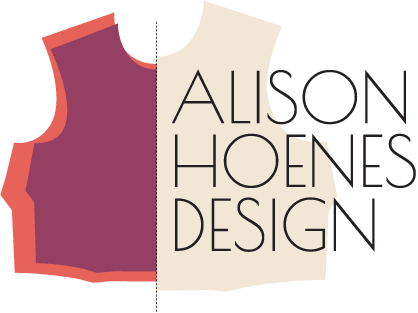Think about one of your garment designs. What type of thread does it use? Would it surprise you to know that it probably uses not just one, but multiple types and colors? Thread is an often forgotten component of apparel, but one that touches on design, functionality, and production planning. Whether you are the one actually sourcing and supplying your thread, I encourage you to give some thought to thread as you work on your next design. Here are six considerations to keep in mind.
Purpose of the stitching
The first thing to consider is the purpose of the stitching. Is it purely functional – used to hold the seams together – or is it also used as a visual design element? If the stitching isn’t visible or decorative, most designers opt for a thread that matches the fabric so it blends in.
Don’t be afraid to have fun with your thread, though! Contrast thread or even tonal topstitching add visual interest and become part of the design itself.
Type of fabric
The heavier the fabric, the thicker the thread. Notice how a pair of jeans has much thicker thread than a set of silky pajamas. The thread should mirror the durability and heaviness of the fabric. Thicker materials need different sewing machines, needle sizes, and thread weights.
Type of stitching
Appropriate thread weights also differ by the type of stitch they are used in. Overlock and coverstitch stitching use lighter weight thread as they use more threads closer together than a basic lockstitch. Thicker threads in these types of stitches would create too much bulk, weigh down the seam, and be uncomfortable against the skin.
Lockstitching, especially when visible as topstitching, uses heavier weight thread. There is added rigidity to the seam line without overwhelming it.
Some types of stitches use specialty threads. You’ll find fuzzy stretch thread – sometimes called wooly nylon – in some types of coverstitching. It can be used as either all the threads in the stitch or the bottom thread only. Elastic thread is used on the back side of shirring stitches to give it the stretch and compression it needs. Note how the same stitch can use multiple thread types.
Location on the garment
Because thread type varies by seam type, you’ll often use two or more types of thread within the same garment. Inside seams might use one type of thread while the topstitching might use another because of its purpose or stitch type.
Color is another consideration when planning out the thread for your design. If your design uses more than one fabric color, you probably need multiple thread colors to match. Don’t forget the smaller details that need stitching like your labels! Your garment might be all black, but if you want matching thread on your white label, you need both black and white thread.
The top thread and bottom bobbin threads don’t have to be the same color either. In the label example above, the white top thread can match your label, while the bottom black thread can match the fabric.
Printing or dyeing process
How your fabric or garment is printed or dyed has big implications for thread choice. Let’s look at a few scenarios. If your fabric is dyed before being cut and sewn, you can just find thread to match (or contrast if you want). For printed fabrics, though, there is an additional layer to think about – the inside. The outside face of the fabric may be a print or solid color, but unless the fabric is very sheer, the inside is still the color of the original fabric. This means that you potentially need one thread color for inside functional stitching and a different thread color for the topstitching and decorative stitching visible on the outside printed surface.
For garments that are dyed or printed after being cut and sewn, consider how the thread will take the ink. My tip is to match the fiber content on the surface of the thread to the fabric of the garment. If the fabric is natural fiber, use a cotton thread. If the fabric is synthetic, use the same synthetic fiber in your thread. Whichever printing or dyeing method you use, you want the fabric and the thread to react to and absorb the color in a similar way. (Unless you want the thread to stay unprinted or undyed on purpose for a contrasting look!)
Simplifying colorways
The thread colors you choose have the potential to simplify or complicate production. Rethreading machines to a new color takes time and this is why factories have a minimum order quantity per colorway. If you want to speed up production and meet higher MOQs, see where you can use the same thread color on multiple colorways. For example, if you have several prints that share a common color, see if you can get away with using the same thread color for all.
Thread often gets forgotten as it is a seemingly a small component of the garment. The factory usually supplies the thread too, which makes it even more removed from the minds of designers. Thread is what is literally holding the garment together, though. For your next design, consider how the thread fits with design, fabric, and production plan.
